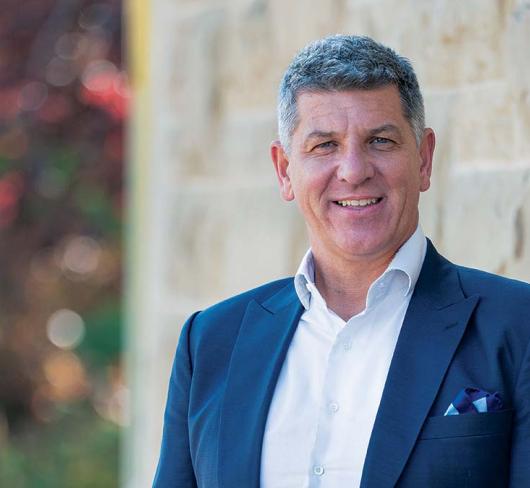
Small Teams with Big Impact: Connecting Theory and Practice
In the spring of 2005, I read Teaching for Deep Understanding: Towards the Ontario Curriculum that We Need1. By the time I had finished the book, I was inspired to write and facilitate a professional book study for the Junior staff at Armitage Village Public School in Newmarket, where I am the divisional lead teacher and literacy special education resource teacher. My major goal was to develop a strong foundation for professional collegiality, and I thought this was the book to do it.
Teaching for Deep Understanding is the result of a collaboration between faculty at OISE/UT and provincial ETFO staff members. This professional research partnership excited me for a variety of reasons. I have been a part-time Primary/Junior instructor at OISE/UT for 16 years and an active Presenter on the Road and course writer for ETFO for 12 years. I love it when the two worlds of practical strategies and theoretical research unite. I was keenly interested in the recommendations about delivering the Ontario curriculum to students in more meaningful and more passionate ways.
To be honest, my excitement was challenged somewhat as I dove into the first of the book’s five parts. It became obvious that this was not a poolside book that I could put down casually as I went to get Popsicles for the kids. But I was encouraged to read and reread because each writer was validating theories and philosophies that I have believed in for a long time. They were reminding us all that our task as professionals is not to “plough through the skill expectations of the curriculum,” but rather to take creative and thoughtful time to help our students make meaningful connections between their daily classroom learning and their life experiences.
My principal, Nancy Lester, supported and encouraged the idea of this book study, which would be the first for the Junior staff at our school. I also had the support of staff at ETFO provincial office. I ordered 14 copies of the book for September and my principal wrote the cheque.
During the summer I worked on creating what I hoped would be a motivating and enriching experience for my colleagues. Having developed my own “deep understanding” that this book was not a quick read, I needed some strategies that would assist my colleagues to read it thoughtfully throughout the school year, even while they were preoccupied with planning, assessing, and writing report cards. I wanted them to commit to the study and, more than anything, I really wanted to elicit thought-provoking, professional, reflective, and even controversial discussions.
I structured the monthly meetings on the model of a literature circle, I thought that modelling an effective instructional strategy that could be used in the classroom would help to make the participants feel safe, creative, and comfortable. Every teacher in the group would have an opportunity to experience each of the literature circle roles (discussion director, artful artist, passage picker, word wizard, and connector director). In the end, this structure worked well, even though it wasn’t a typical book club structure.
The challenging part of the study came after the books had been distributed and the structure and times of the studies had been announced and discussed. The teachers were initially pleased to receive the new resource, and they responded positively to the study format. But when they began reading the book, I started to hear rumblings of concern. At our first meeting, while in our literature circle roles, we vented a little about how “deep” the reading was. The second study meeting was better. Participants took their roles seriously and provided creative, thoughtful responses. As the study’s facilitator, I felt optimistic about the direction it was taking.
By meeting number three we were on a roll. Everyone in the study connected strongly with Michel Ferrari’s article “Teaching Wisdom through Deep Critical Thinking and Development of Character.” We all agreed this was an area that we felt very passionately about, and each of us reflected on our own feeling about the value of making mistakes in life, gaining wisdom from experience, and developing our own deep understandings.
We decided this process of developing wisdom was something we would like to explore further. We discussed ideas and strategies for demonstration lessons for all of our Junior students based on the concept of wisdom. I facilitated these demonstration lessons, with the assistance of the homeroom teachers.
Called “Reflecting on the Meaning and Value of Wisdom,” the demonstration lessons began with a discussion of the definition of wisdom. The Three Questions, a book by Jon J. Muth, was read aloud. Based on a short story by Leo Tolstoy, the book is a rich work of children’s literature about life experiences, philosophy, and the search for meaning. Following a discussion of the book, students were asked to think about the concept of wisdom and to complete a reflective writing response. One task was to think about and describe the characteristics of a person whom they knew and thought was very wise. What had they learned from this person?
Students also wrote about a time when they gained wisdom through a specific learning experience. Finally, they were asked to think creatively to develop a powerful statement or belief about the meaning of wisdom. These were shared and displayed as part of our culminating activities. One of my favourites was “Wisdom is a gift that you earn through experiencing life, and it is a gift that no one can ever take away from you.” Students loved the lessons and, without a doubt, we helped each and every one of them think deeply about gaining wisdom in their lives and valuing it forever.
The teachers shared with each of the classes their own personal stories, and this helped to form connections and to build a learning environment that was honest, motivating, and real. The students reciprocated with their reflective written responses, which were shared and celebrated throughout the division. This sharing was definitely a highlight for everyone involved. The emotional intelligence of the staff and students was high.
As the book study drew to a close, we held a celebration and reflection at my home in June. The plan for a poolside party was recast when it rained . . . deeply! We did, however, have a very collegial and constructive discussion about our book study process. Each teacher completed a reflective response and a constructive feedback sheet. Overall, all of my colleagues liked the literature circle format of the book study. They appreciated the comfortable and relaxed approach to the meetings. They valued the more practical aspects of Teaching for Deep Understanding, and also felt positive about how it confirmed their own philosophies and beliefs. I read the word validation in many of the responses.
We all enjoyed the professional dialogue, the honest perspectives – and even the frustrations. We were pleased that we had demonstrated our own commitment and persistence in collaboratively completing the study. In the end, we all felt strongly about the link between deep understanding and student motivation.
Our experience with Teaching for Deep Understanding has led us into our next book study, in which we are using Eric Jensen’s latest work, Tools for Engagement: Managing Emotional States for LearnerSuccess.2 This book is a perfect follow-up to Teaching for Deep Understanding. We have found that book study is a great way to get together and focus on teaching and learning.
1 Teaching for Deep Understanding: Towards the Ontario Curriculum that We Need, Edited by Kenneth Leithwood, Pat McAdie, Nina Bascia, and Anne Rodrigue. Published by O SE/UT and the Elementary Teachers Federation of Ontario, 2005.
2 Eric. Jensen, Tools for Engagemen: Managing Emotional States for Learner Success, San Diego, CA: The Brain Store, 2003.

